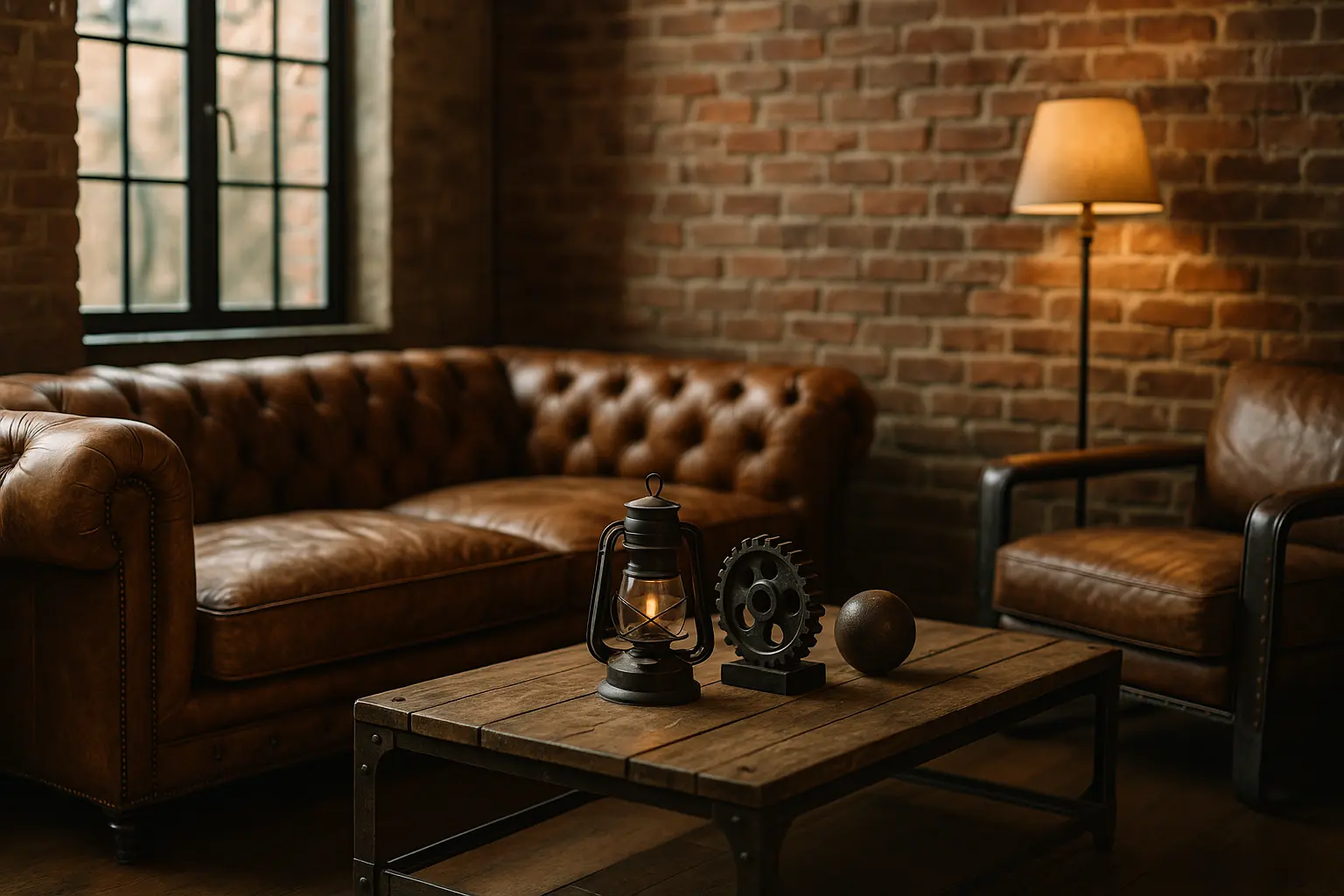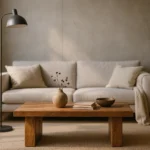Welcome to the world of industrial design, a realm where raw materials and vintage aesthetics converge to create spaces that are both functional and visually captivating. The industrial style has captivated the imaginations of homeowners and designers alike, offering a unique blend of rustic charm and modern elegance. If you’re intrigued by spaces that celebrate the beauty of unfinished elements and a minimalist approach, then you’re in the right place. Let’s dive into the essentials of industrial interior design and discover how to transform your living spaces with this bold and edgy style.
The Origins of Industrial Style
Industrial design originated from the transformation of old factories and warehouses into residential living spaces. The need to repurpose these structures led to the creation of a style that emphasizes exposed metal, raw concrete, and unfinished surfaces.
A Historical Perspective
The industrial style emerged in the mid-20th century, primarily as a response to the decline of manufacturing and the availability of abandoned industrial spaces. These vast, open areas with high ceilings and large windows became a blank canvas for designers who saw potential in their rugged aesthetic. Embracing the notion of “form follows function,” industrial design celebrates the use of materials in their most raw and unadulterated form.
The Appeal of Raw and Exposed Elements
The allure of industrial design lies in its ability to reveal the beauty of bare elements. Exposed brickwork, visible ducting, and unpolished wood are not only functional but serve as integral parts of the overall aesthetic. These elements create a vintage charm, adding depth and character to any space.
The Modern Twist
While the industrial style pays homage to its historical roots, it has also evolved to incorporate modern design principles. Sleek furniture and innovative lighting solutions are often juxtaposed against the rugged backdrop, creating a harmonious balance between the old and the new.
Key Elements of Industrial Interior Design
Embracing the industrial style means understanding the key components that make this design approach unique. By focusing on materials and elements, you can transform any space into an industrial haven.
Materials that Speak Volumes
At the heart of industrial design is a commitment to authenticity. Concrete, metal, and wood are the trifecta of materials that define this style.
- Concrete: This material is celebrated for its raw, unrefined look. Whether it’s used for flooring or accent walls, it brings a modern edge to any space.
- Metal: From steel beams to iron fixtures, metal is a staple in industrial design. Its sleek texture and durability make it ideal for creating a modern and utilitarian aesthetic.
- Wood: Incorporating reclaimed wood adds warmth and a touch of nature. Look for pieces with visible grain and knots to enhance the rustic feel.
Open Spaces and Functional Layouts
Industrial spaces are known for their open layouts and functional designs. By minimizing partitions and walls, you create a seamless flow that enhances natural light and fosters connectivity.
Vintage and Modern Contrast
The industrial style thrives on contrasts. Introducing vintage pieces against a modern backdrop adds an element of surprise and intrigue. Think of pairing an antique leather sofa with a sleek metal coffee table.
Strategic Lighting
Lighting is a crucial element in industrial design. Opt for fixtures that highlight the space’s industrial roots, such as oversized pendant lights or metal cage lamps. These should complement the room’s overall aesthetic while providing ample illumination.
Creating Industrial Style Spaces
Transforming your space into an industrial masterpiece requires a thoughtful approach to design and decor. Here’s how you can achieve an industrial look that is both stylish and functional.
Setting the Foundation
Begin with a neutral color palette, primarily consisting of shades of gray, white, and black. These colors serve as the perfect canvas, allowing you to experiment with bold textures and materials. Concrete floors, exposed brick walls, and wooden ceiling beams lay the groundwork for an industrial ambiance.
Choosing the Right Furniture
When selecting furniture, prioritize pieces that are both functional and aesthetically pleasing. Opt for leather sofas, metal chairs, and wooden tables that exude a rustic yet refined charm. Keep in mind that less is more; simplicity is key to achieving an industrial look.
Incorporating Raw and Vintage Elements
Infuse your space with personality by incorporating vintage items such as retro clocks, old signage, or repurposed factory carts. These elements add authenticity and a sense of history.
Artistic Accents and Decor
Industrial spaces thrive on unique decor that reflects personality. Consider using metal sculptures, abstract art, or large-scale black and white images to add visual interest.
Bringing it All Together
The final touch is lighting. Aim for fixtures that echo industrial origins, such as Edison bulb pendant lights or a vintage-inspired chandelier.
The Benefits of Industrial Design
Adopting an industrial style for your interior space offers a myriad of benefits beyond aesthetic appeal. Let’s explore how this design approach can enhance your living experience.
Sustainability and Repurposing
One of the most significant advantages of industrial design is its focus on sustainability. The use of reclaimed materials and repurposed items reduces waste and promotes eco-friendliness. By choosing vintage or second-hand furniture, you’re giving new life to old pieces while adding character to your space.
Versatility and Adaptability
Industrial design is incredibly versatile, adapting seamlessly into various environments, from urban lofts to suburban homes. Its open layout and minimalist approach make it easy to customize according to individual needs.
A Sense of Timelessness
The blend of raw elements with modern touches gives industrial design a timeless quality. Unlike other trends that may fade, industrial design remains relevant due to its classic appeal and emphasis on functionality.
Encouraging Creativity
By incorporating unfinished surfaces and unique decor, industrial spaces invite creativity and self-expression. These spaces become a canvas for personal style, allowing for constant evolution.
Enhancing Social Interactions
Open layouts and seamless flow encourage social interactions, making industrial spaces ideal for entertaining. The lack of barriers fosters communication, ensuring that everyone feels connected.
Embracing industrial design is an exciting journey into a world where raw elements and vintage charm come together to create stunning interiors. Whether you’re drawn to the exposed brick, the sleek metal, or the warm tones of reclaimed wood, this style offers an opportunity to create spaces that are as functional as they are beautiful.
Incorporating industrial elements into your home is more than just following a trend—it’s about celebrating the beauty of imperfection and finding elegance in simplicity. So, if you’re ready to transform your home, let the principles of industrial design guide you on your path to creating a modern, stylish, and inviting living environment.
Step into the realm of industrial style and let your imagination run wild. With its unique blend of history, functionality, and modernity, you’re sure to craft a space that’s not only original but truly reflective of your personal taste. Welcome to the world of industrial elegance!
FAQ
What are the key characteristics of industrial style interior design?
Industrial style interior design emphasizes raw, unfinished elements, open spaces, and a utilitarian aesthetic. It often features exposed brick walls, metal fixtures, wooden beams, and concrete floors, creating a look that is both rugged and refined.
How can I incorporate industrial style into my living room?
To bring industrial style to your living room, consider using a neutral color palette with grays, blacks, and whites. Incorporate furniture with metal frames and reclaimed wood, and add lighting fixtures like exposed filament bulbs or factory-style lamps. Accessories like steel shelving and vintage finds further enhance the industrial vibe.
What materials are commonly used in industrial design?
Industrial design often utilizes materials such as raw wood, steel, iron, and concrete. Glass and brick are also prevalent, contributing to the open and spacious feel. These materials, with their unfinished and rugged textures, are central to achieving an authentic industrial look.
Can industrial style work in small spaces?
Yes, industrial style can be adapted to small spaces by focusing on minimalism and functional furniture. Opt for multi-functional pieces, like a coffee table with storage, and keep the color scheme light to maintain an airy feel. Utilizing vertical space with tall shelving can also help make the most of a compact area.
How can I add warmth to an industrial interior?
To balance the cool tones of industrial design, introduce warmth through textiles and color. Use soft furnishings such as wool throws, plush rugs, and cushions in warm tones like rust, ochre, or terracotta. Incorporating plants and wooden elements can also add warmth and create a welcoming atmosphere.



